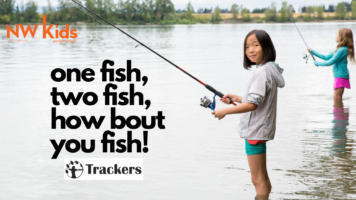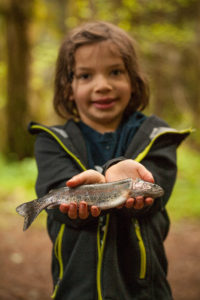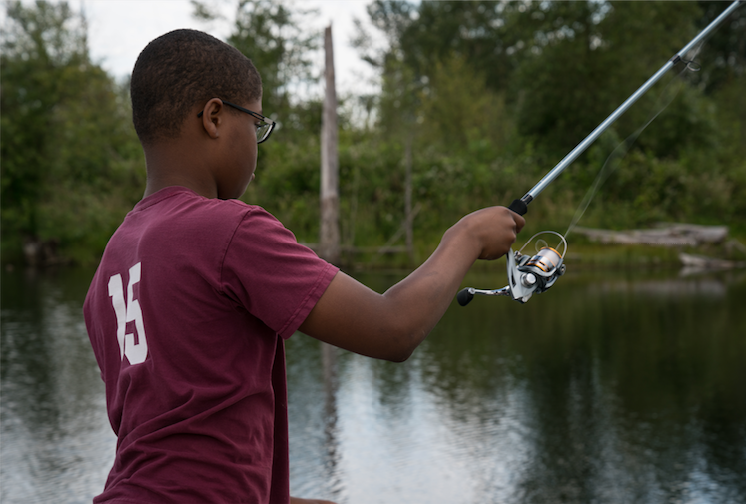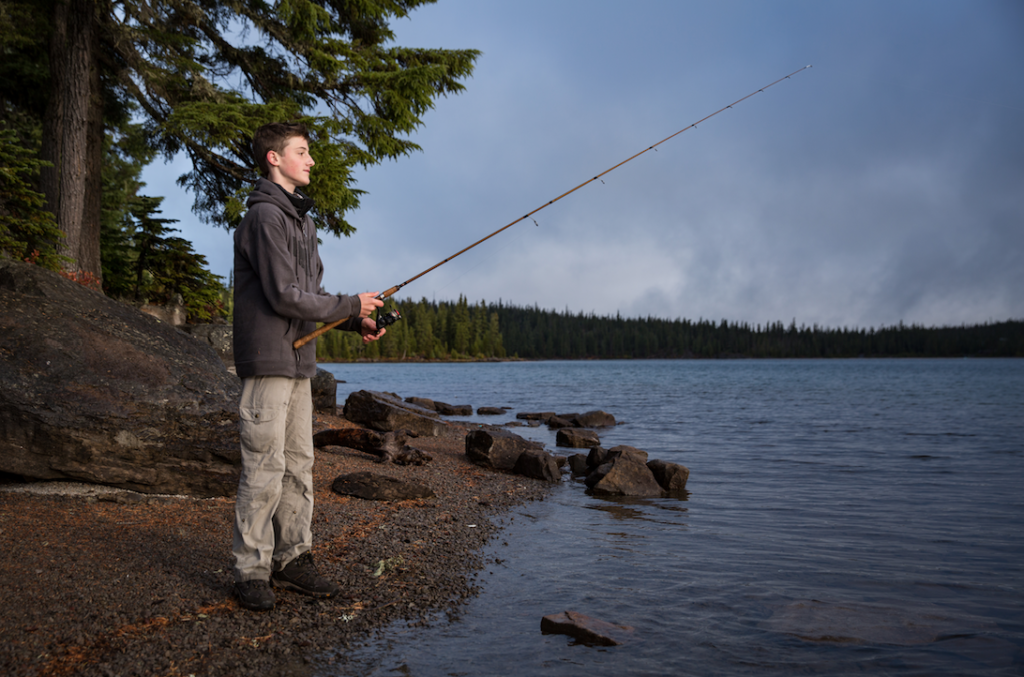Guide to Fishing with Kids

One Fish, Two Fish, How About YOU Fish!
The sunshine of summer has us all yearning to get closer to the water. And while splashing around in a lake, floating down a river, and running through a waterfalls will be lots of fun, fishing can be the year-round activity that brings a deeper connection to our waterways. While fishing, we become part of nature’s cycles—the ebb and flow of tides, the seasonal needs and patterns of fish, the effects of weather on the waterscape. By fishing, we re-engage with food production cycles. We can see the way pollution moves through plants and animals, and into our systems. We can think more specifically about what we do to help conservation efforts. We learn that we can only take as many fish as we need, for the population to rebuild and stay strong.
So here’s a quick starter guide to getting your family out on a fishing adventure! There’s always more to explore, but these basics will get you going.

Where to Go
There’s no doubt that this corner of the country has so many beautiful waterways. But here’s where our Trackers experts are fishing now:
• St. Louis Ponds—Located just south of Woodburn, the St. Louis Ponds are a Trackers top spot. No boating allowed, making this a serene space to hone your fishing skills.
• Henry Hagg Lake—Just outside Portland, in Gaston, lies this man- made lake. The no-wake zone makes it a great place to take young ones.
• Clackamette Park—At the confluence of the Willamette and Clackamas rivers, this Oregon City park has shelters and beach access as well as a boat launch for family fishing fun.

How to Fish
Fishing can get incredibly intricate with various lures, bobs, and knots to tie. But on day one at Trackers, we like to teach a basic set up—just a bamboo pole, length of line, and a single hook. Trim up a piece of bamboo for your cane, and split one end to make a notch. Tie your line (about 6–7ft. of it) on the notch, and then wind the rest of the line around the pole. When you reach the end of the line, secure it again on a notch so it stays bound up during travel. Tie on your hook, dig up a grub, and you’re ready to go!
This bamboo pole may not be the most flashy or glamorous, but it becomes a sort of meditation or practice in paying attention. Kids have to be close to the water to use this set up, they have to be still and quiet to not scare the fish, and can see the immediate consequence of noises and movements as the fish dart away into hiding. They get to know the water—the warm spots, the cool spots, and where the fish like to hide. This type of fishing isn’t just about catching; it’s about becoming more connected to the fish, watching their movements and behaviors up close, and becoming a part of nature’s flow.

Safety & Your Responsibility
While fishing can be a relaxing hobby with lots of down time, it’s still essential to pay attention. Fishing responsibly means being aware of what you can control, and doing everything in your power to keep yourself and others safe, now and for years to come.
Hooks are Sharp.
To protect yourself and those fishing with you, maintain control of your hook at all times. Cast thoughtfully and check your surroundings. Set up in an area where people aren’t walking or sitting behind you. For younger children and beginners, we recommend you crimp down the barbs on hooks. And remember that your fishing pole is a tool, not a toy.
Out on the Water, There’s No Protection from the Sun.
Plus, the bright rays get reflected back on to you from the water’s surface. Be sure to use sunscreen—applying before you get on the water—and eye protection. A sun hat, too, for your head (even if you have hair!) Bandanas are also a nice natural air conditioner. Wet them and drape over the back of your neck to help fight the heat.
Keep it Cool.
If you plan on catching along with fishing, be sure to bring a cooler filled with ice. Fish should be chilled and kept cold to preserve flavor and texture, and to keep your catch as fresh as possible.
Water water everywhere!
But not a drop to drink. Remember to bring lots of water to the water. As with any outdoor activity, keeping yourself hydrated will help you pay attention and stay focused, allowing for a safe and fun fishing adventure.
These tips should help you and your family get started, but the Oregon Department of Fish & Wildlife (ODFW) has some great resources, too, including a recommended gear list for whatever fishing adventure you choose. Plus, they run free family fishing events throughout Oregon to get you and your little one started. Always be sure to check with your local authorities for weather reports and licensing requirements.
Rivers and streams are the lifeblood of the land that provides for all of us. Building relationships with these fresh water sources will help us to revitalize the land, and in turn, all the species that depend on their cycles. At Trackers Earth, the Mariners Guild engage with all of nature’s waterways, handing down seasoned wisdom and years of enthusiasm to help you and yours get out on the river. With options from one- week camps to year-long apprenticeships, Trackers Earth has the programs to fit your schedule, featuring original themes and real skills. We hope to see you on the water soon.


